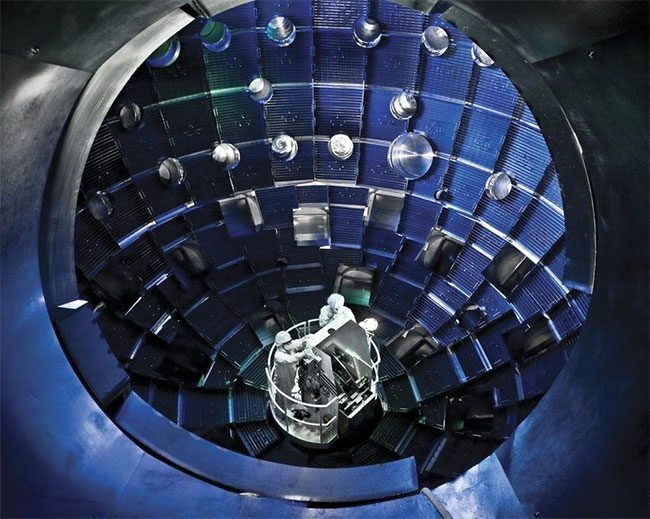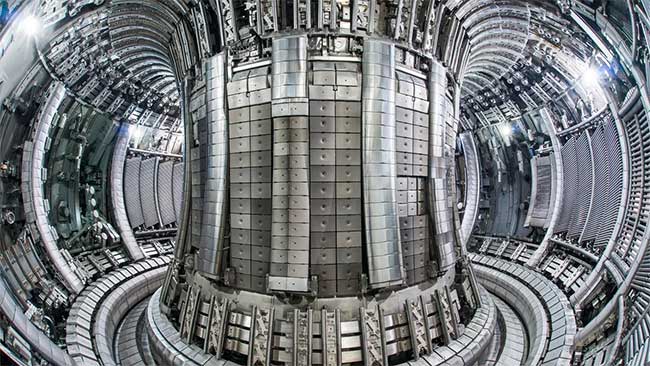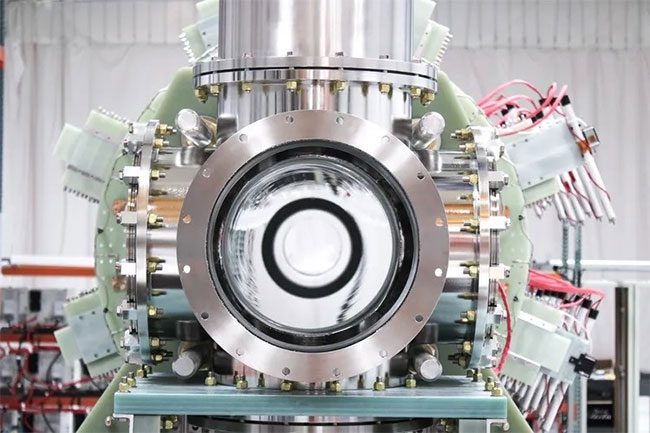Microsoft has signed an agreement that has surprised the tech industry by purchasing power from a nuclear fusion plant. This is the same reaction that generates energy for the Sun.
Nuclear fusion promises to be an infinite source of clean energy, but commercial deployment is still a distant future. A company named Helion Energy claims that they can supply this energy to Microsoft by 2028.
According to the agreement announced on May 10, Helion will operate the world’s first commercial nuclear fusion generator by 2028, connecting it to the power grid in Washington and generating at least 50 megawatts of electricity.
“This is the boldest goal I’ve ever heard,” said Robert Rosner, a theoretical physicist at the University of Chicago.
Experts estimate that the first fusion power plant could be operational by the end of this decade or several decades from now. To meet the agreement with Microsoft, Helion must achieve significant technological breakthroughs in a short time and then commercialize the process so that it is cheaper than other energy sources.
Aiming to Harness the Power of the Sun
“This is a binding agreement with financial penalties if we cannot fulfill it. We are committed to building a nuclear fusion system and commercially selling that system to Microsoft,” said David Kirtley, the founder and CEO of Helion, in an interview with The Verge.

Inside the nuclear fusion reactor at Lawrence Livermore National Laboratory (USA). (Photo: BBC).
Nuclear fusion mimics how stars produce light and heat. For instance, in the Sun, hydrogen nuclei fuse together to create helium and a massive amount of energy.
This is also the principle behind hydrogen bombs, also known as thermonuclear bombs. However, for weaponization, this reaction does not need to be controlled as tightly as when generating electricity.
Nuclear fusion is different from nuclear fission, which releases energy by splitting atoms. A major drawback of fission is that it leaves behind unstable nuclei that can remain radioactive for millions of years. Fusion avoids the issue of radioactive waste because it only produces new helium atoms.
Today, to generate electricity through fusion reactions, scientists use powerful laser beams directed at a small target or employ a machine called a tokamak that creates magnetic fields to compress superheated matter, or plasma.

The fusion reactor of the Joint European Torus (JET). (Photo: JET).
Helion does not use these methods. The company is developing a 12-meter-long device known as a plasma accelerator that heats fuel to 100 million degrees Celsius. This device heats deuterium, an isotope of hydrogen, and helium-3 into plasma, then uses magnetic fields to compress the plasma until fusion occurs.
Helion’s Technical Secrets
Helion claims that all the electricity used to initiate the reaction will be “reused” to power the magnets that generate the device’s magnetic fields. “We recover all the energy input into the nuclear fusion reaction, allowing us to build smaller and cheaper systems,” Kirtley stated.
“This is an exciting announcement, and many in the tech industry are eager to see the technical details,” noted Anne White, a nuclear energy expert at MIT’s School of Engineering.
Finding ways to use energy efficiently is key to making fusion energy a reality. Extremely high temperatures and pressures are required to force atoms to fuse together. So far, researchers have had to expend more energy to create a fusion reaction than the energy produced by the reaction itself.

Helion’s prototype device viewed from the front. (Photo: Helion).
In December 2022, laser technology achieved a breakthrough known as “fusion ignition“, marking the first time an artificial fusion reaction produced a “profit” in energy. This is a significant milestone that Helion has yet to reach.
Rosner pointed out that the source of helium-3 could present another major challenge. This is a very rare isotope used in quantum computing and medical imaging. Helion claims to have patented a process for generating helium-3 by fusing deuterium atoms together in their plasma accelerator. An appealing aspect of nuclear fusion is that it can be powered by hydrogen, the simplest and most abundant element in the universe.
Helion’s backers include Sam Altman, CEO of OpenAI, who is the chair of Helion’s board and its largest investor, according to The Washington Post, and may have facilitated the agreement between Helion and Microsoft.
“The deal with Helion aligns with our long-term clean energy goals and will drive the market to establish a new, efficient way to deliver more clean energy,” said Brad Smith, President of Microsoft, in a press release.




















































